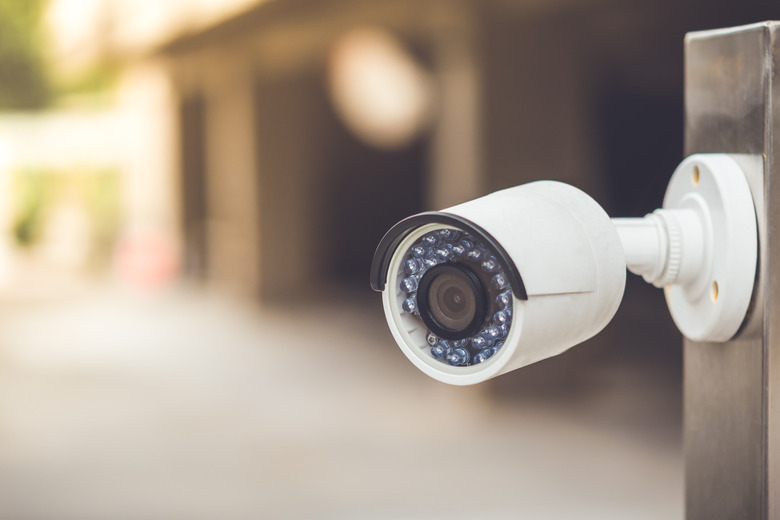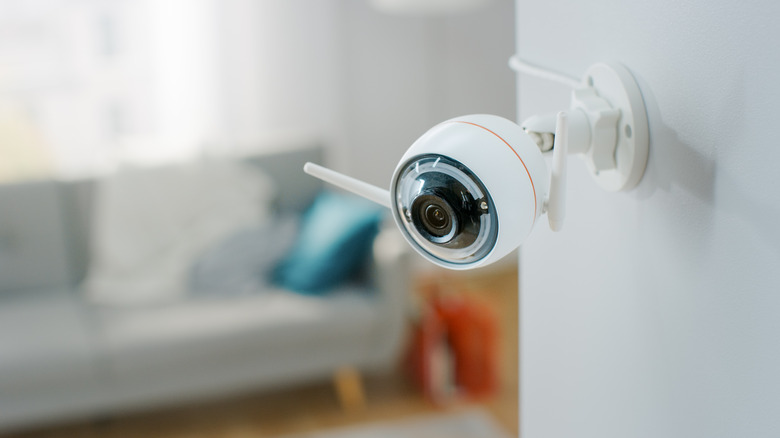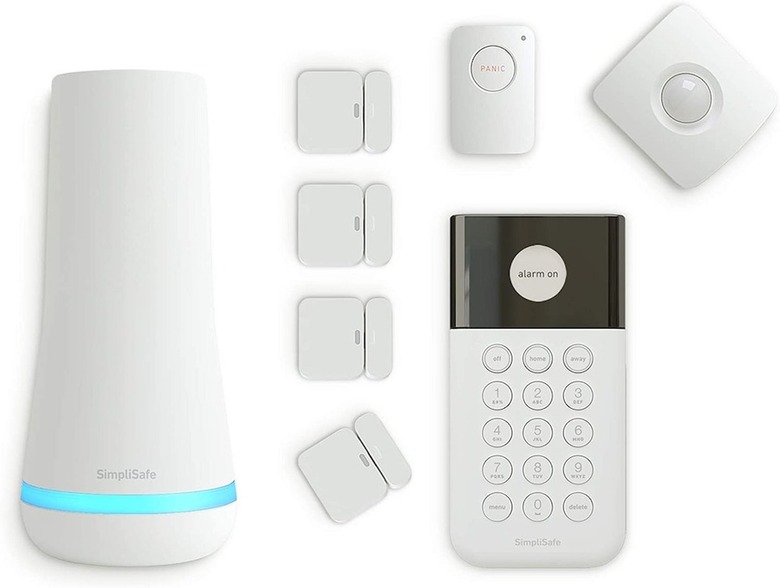Everything You Need To Know About DIY Home Security Systems
We may receive a commission on purchases made from links.
For those who aren't ready for the commitment implied by hard wiring, DIY home security systems are a great option. If you don't like it or want to try something else, you can take it out easily without busting into walls. The DIY option also works well for super-savvy techies who are looking to design and custom build their own system (and who aren't looking to pay monthly fees for a monitoring plan). Regardless of the category in which you find yourself, it helps to take a look at the top-ranked DIY home security systems on the market today and get an overview of what is available and what is necessary to protect your home and family.
The Need for Home Security
The Need for Home Security
You think of your home as your refuge — your safe place where you can close the door and leave the world's woes behind you. However, homes can and do get broken into every single day. A home gets robbed every 13 seconds in the United States, and no neighborhood is sacrosanct. Of the 2.5 million burglaries every year in the U.S., two-thirds are home invasions, and a home without a security system has a 300 percent greater chance of getting broken into than a home with a system in place. That's why keeping out the bad guys is easily the top reason people want security systems.
Robbers and burglars are not the only dangers against which a DIY security system can guard. Home invasions can result in the loss of valuables, but a home fire can destroy everything. So, smoke detectors and alarms are also high on the list along with carbon monoxide detectors, alerting you to the presence of this colorless, odorless gas that can cause headaches, vomiting and even death.
DIY System Considerations
DIY System Considerations
A classic home security system is hard wired, running on electrical connections behind the walls, but wireless home security systems are widely available these days and are becoming increasingly popular. There are many factors to consider when you decide to purchase a DIY system since it should reflect your own assessment of the security you need.
To determine this, consider your home's layout. Front doors, ground-floor windows and all bedroom windows require the most security. Sheds or garages may require less. Depending on what you keep there, a regular lock may suffice. Sensors attached to windows and doors notify you when they are forced open, and outdoor motion detectors alert you to potential intruders. Don't invest in more or less security than you really need.
Other important considerations in selecting a system include the price tag, the ease of installation and integration and whether you want to self-monitor or sign up for professional monitoring.
Costs of Equipment and Installation
One big advantage of DIY systems is the reduced cost of installation. Opting for a wireless system may save you thousands of dollars, especially if you are ready to put it together yourself. Even if you hire an installer, he won't need to drill through walls to run wires and connect everything to your home's electrical system. Usually, the only electrical step necessary is plugging a cord into a wall socket.
The price you'll pay for a DIY security system will depend on the equipment and system you select. The monitoring fee is generally reduced without a contract, eliminating cancellation fees. However, don't pick a system just by the price tag since smaller, cheaper systems may not provide enough power for a larger home. You want the system to stay in constant contact with sensor components, which means they have to communicate through all the different building materials from which your house is made.
Ease of Installation and Integration
It is also important to select a system that installs easily. Since the idea is to install a DIY home security system yourself, look for a system that isn't too complex. Many systems offer peel-and-stick window and door sensors that are easy to set up. For those who want to go DIY with help, some companies provide professional installation services for a fee.
As far as integration goes, if you already use Amazon Alexa or some similar automation assistant, consider whether the DIY security system will work with it before you sign on the dotted line. If your home already has smart-home accessories, be sure a DIY system can integrate with your existing setup.
Included and Available Components
The type and amount of equipment in DIY starter kits varies, and generally, the more add-ons, the higher the cost. Most kits include basic equipment, like a control panel, motion sensors and door and window sensors. Others provide additional components, like smoke and carbon monoxide detectors, window-break detectors, outdoor cameras and optional smart-home devices. Almost all throw in signage to warn thieves.
There are many different types of DIY protections available in commerce that can help you to achieve your security goals. You need to evaluate your family's risks and decide how much and what types of security you need.
Self-Monitoring vs. Professional Monitoring
Finally, you'll have to decide who is going to monitor the system. Self-monitoring means it's you who must keep watch over the sensors and detectors. This type of monitoring means more work for you, but it's less expensive. Many systems also offer the option of professional monitoring for a monthly fee. A few offer only the professional monitoring option.
Best DIY Home Security Systems
Best DIY Home Security Systems
During the period of time when a home was actually a castle, the main security system was the moat. These days, home security doesn't usually involve bodies of hard-to-cross water but rather sensors, detectors, cameras and alarm systems to let you know when danger is near. The best home security kit out there depends on your goals and budget. These systems have great ratings, and each one will meet the needs of some homeowners.
References
Blue by ADT: Best for DIY Customization
Blue by ADT offers basic DIY home security systems that allow for maximum customization. You pick what you want (with advice from Blue by ADT if you want it), you install it and then you choose to either self-monitor or to use ADT's 24/7 professional monitoring services for $19.99 per month. While signing up with ADT's main service requires a long-term contract, you'll avoid this with Blue by ADT.
Blue by ADT offers three different starter kits: a basic build-your-own-system package starting at $179.99, a more advanced starter system from $219.99 and its most sophisticated starter plus system at $299.99. All packages include a hub and integrated keypad, door and window sensors, motion sensors and access to the mobile app. If you want wireless security cameras, cloud storage or video doorbells, they are available for an extra fee.
Ring Alarm: Best if You Want it All
Ring Alarm is a user favorite, and its eight-piece home security system got a five-star review from over 11,000 happy users on Amazon. If you want lots of protection and cost is not a consideration, consider Ring's high-end starter kit that includes eight sensors, a base station, two keypads, two motion sensors and a Wi-Fi range extender. Though it has many elements, it's very simple to install. You plug in the base station and then connect it to the web through the Ring security app. It's easy to mount the sensors with can't-fail double-sided adhesive. Once in place, these elements — the base station, the sensors and the Ring security app — do the monitoring for you.
Ring isn't for everyone. If you don't have and don't want Amazon Alexa, look elsewhere. Ring doesn't directly integrate with any other automation assistant. On the other hand, it provides affordable, professional monitoring and connects with other Ring devices and dozens of smart locks and switches.
SimpliSafe: Best Trial Period and Guarantee
This wireless home security system is consistently rated among the best kits out there, and one of its top draws is its generous trial period. SimpliSafe offers a 60-day trial with a 100 percent money-back guarantee for that period.
With SimpliSafe, you can put together your own selection of elements or purchase one of the kits. The eight-piece kit, for example, contains one base station, a keypad, four entry sensors, a motion sensor and a panic button, and it garnered an impressive 4.5-star rating from almost 2,000 reviews on Amazon. For a small monthly fee, you can opt for 24/7 professional monitoring, and the products work just fine with either Amazon Alexa or Google Assistant.
Alder Home Security: Best for Extra Alerts
Yes, the Alder security system protects against forced intrusion, like robbery and burglary, but it really goes the extra mile in alerting you if other dangers arise. Think fire, carbon monoxide leaks, flooding and medical emergencies. It offers both professional and DIY installation for its home security systems but doesn't allow users to self-monitor. It requires use of professional monitoring, starting at $35 per month.
The Alder security system is wireless and relies on sensor use for motion detection. Components include motion sensors, door and window sensors, glass-break sensors, smoke detectors, flood sensors, freeze sensors and carbon monoxide detectors. However, it doesn't offer many options for smart-home integration, working only with the usual suspects, like Amazon Alexa, Echo and Z-wave technology.
Abode Home Security: Best for Integration
Abode home security is a great choice for a first home security system. It is an easy-to-install system that integrates readily with products and services you might already have, like Amazon Alexa, IFTTT and Nest for voice-enabled arming and disarming. Abode can also meld smart-home devices and platforms into its systems, including HomeKit, Z-Wave, Wave Zigbee, Hue and Google Assistant.
You can monitor and control smart devices with Abode from your smartphone and your computer without paying any monthly fees, but if you prefer, Abode also makes professional monitoring and cellular backup available on a no-contract system. There are no fees if you decide to cancel. Start with an Abode package and then purchase any additional products you find that you need, including cameras, sensors, smoke and water detectors and other smart-home devices.
Ooma Home Security: Best for Budgets
Ooma may not be the cheapest DIY home security system out there, but it is among the least expensive in the top tier. The kits start at under $200 and include essentials, like Telo VoIP hub, motion sensor, sensors for doors and/or windows, water sensors and smart security apps. There is also a unique negative alert feature that warns you when something you expect to happen hasn't occurred, like your child not arriving home from school. You get access to emergency services through Ooma's app, but there is no home automation, no security cameras and no integration with third-party devices.
Ooma doesn't have all the bells and whistles, but it's a good choice for those seeking a bare-bones DIY security system with excellent mobile app integration at a reasonable cost. The company's product-only secure plan (providing all of the security features other than professional monitoring) is a very inexpensive self-monitoring option that costs just $5.99 per month, or you can sign up for professional monitoring at $14.99 a month.


